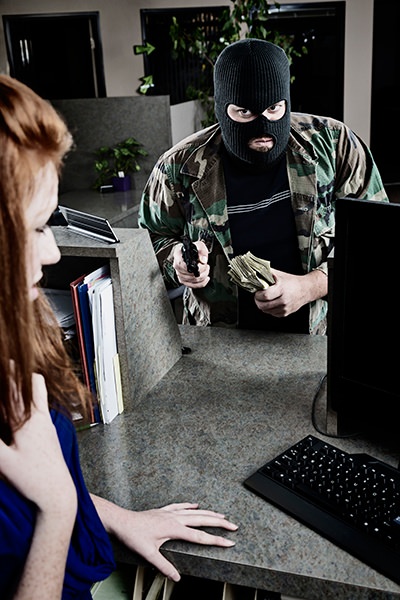
Panic buttons, or personal emergency alarm buttons, are buttons that can be pushed in case of an emergency that will notify a response center that help is needed immediately.
In a business setting, panic buttons are typically used in case of a robbery. However, other institutions may want panic buttons, such as courthouses.
2 kinds of panic buttons
- Button push that notifies the response center
- 2 way voice button
The regular button push is much more common than a 2 way voice system. In a 2 way voice system, dispatchers are able to listen in to what is happening, but they only work with certain systems and depending on the microphone and audio, the dispatcher may not be able to hear much.
There are 2 kinds of button push panic buttons. One triggers the alarm with one push of the button, while more companies are moving towards a 2-push button in order to reduce the number of false alarms.
One place you probably won’t want a panic button is inside a metal drawer. Since the buttons are supervised by a monitored security system, a metal drawer can detract from the button communicating with the system and response center.
What happens after a panic button is pushed
After a panic button is pushed, the monitoring center will be notified and they will call the authorities and/or your call list. Police departments react in different ways when notified about a panic button alarm.
What you should do before you get a panic button
Before you get a panic button, you might want to do the following:
- See what kind of emergency alarms other companies in your industry are using
- Talk to your local police/sheriff department about how they respond to panic button alarms
- Make sure you have a way to regularly test the functionality of the button and that employees know how and when to use a panic button
- Get a free security analysis from a security system professional to determine what kind of alarms will best fit your needs
911 is always better than a panic button in an emergency as the dispatchers can get more information about the situation. Of course, your safety is the top priority — do not push a panic button if it will put yourself or others in danger. It is better to be robbed and then call 911 than to agitate a panicked robber by pushing a panic button.
Our blog post, Security Systems 102: The Basics of Business Security, or our business security systems web page can give you more information about a security system for your business.
Updated August 9, 2016

